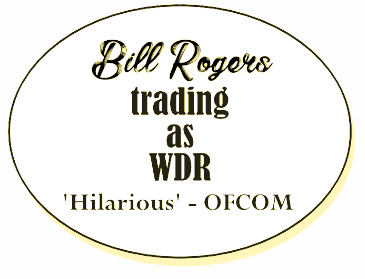Those who may have followed my musings on attempts to introduce common tools in BBC production might like to balance these responses I've had from inside the radio "business".
First...
Pro-Tools/SADiE
VCS Dira!
Yeah, it'll do the job, but the result won't be pretty or indeed easy
Second
...everything you said was spot on..
Thursday, February 6, 2014
Subscribe to:
Post Comments (Atom)



Why is a single set of tools 'common sense'? This audio technician could argue that most craftspeople or artists get to choose their own tools. It's a cosy picture: the aproned editor carefully honing a sequence, the floor covered in shavings of audio and video – how dare anyone dictate to this artisan his or her choice of tool? But by far the majority of editing that takes place in-house these days is done not by craftspeople but by journalists, who are not called hacks for nothing. They're not techies and anyway craftspeople are typically seen as an expensive indulgence for a Corporation that has painted itself into a corner by having to sustain a massively expanded range of networks and services with a shrinking workforce – despite our being paid less.
ReplyDeleteBut let's not be faint of heart: here is New Broadcasting House! Its lights shine bravely still! Let's eavesdrop on a training session run by one of those craftspersons whose occupation has all but gone. He is teaching journalists how to use the new single set of tools for radio decreed from on high, VCS Dira. What are the hacks saying? Hark:
"I can't work with this pile of s***! Why doesn't it do what Cool Edit used to do?”
“Why don't the ruddy management listen to the people who actually do the job?"
And the erstwhile craftsman adopts a wry expression, because the hacks sound just like the craftspersons did when their craft was wrested from them in the name of efficiency years ago.
It turns out that, no matter who you give a job to, they want to be able to choose the right tools for the job, just like the Ferrographs and Studers of prehistory. But in the BBC one is nothing if not infantilised when it comes to choice of technology. And, 15 years ago, Auntie went to the shops and brought back lots of SADiEs. Outside of News, producers and sound technicians were delighted: these supertoys could keep them happy – and in jobs – for years on end. In News, journalists, after struggling with SADiE for a few years, decided it was no fun – it only ran on a high-end computer equipped with SCSI drives; it didn't network with other machines; it was fearsomely full of features, and therefore pitfalls for the uninitiated. Basically, it needed technicians, which rather defeated the object of the exercise. So they swapped it for the far more suitable – and far cheaper – Cool Edit Pro, which ran on a simple Windows PC.
It was a tough time for journos; they'd already had to get their heads around Basys, their first newsroom computer system, and D-Cart, an Australian digital audio editor & playout system. Now in quick succession came their replacements, first ENPS and now this SADiE/Cool Edit malarkey? Give us a break! And extra money for having to use this new kit! But Cool Edit was indeed cool; it was the Goldilocks solution: just the right amount of bells and whistles. So no wonder they squawked so loudly when Auntie tried to make them play with another, more suitable toy. One, moreover, they'd bought and paid for before asking any of the kids if they'd like it. She never learns.
The moral of this tedious tale? That you should talk to the children before you spend great wodges of the licence-payers' hard-earned. As any parent could tell you, the toy they like best is so often something a lot cheaper – or even something they made themselves. In Bush House, World Service radio news achieved its tape-to-digital revolution by combining two low-end tools: Dave2000, a networked playout system that ran on ordinary - therefore cheap - Windows servers, and BMSEdit, a multitrack Windows-based editor whose files took up just 4 MB and can still outperform, in several respects, its vastly more expensive counterparts. They were networked together and maintained entirely by in-house expertise, and formed a system that ran, almost without incident, for about 15 years. It's in the bin now, of course. It was getting dog-eared, and another chunk of the licence fee was burning a hole in Auntie's pocket.
Not that VCS Dira is bad. Sure, it could be improved: it makes audio edits that clunk and click, and its multitrack editor needs better EQ and audio treatment tools. But it has very useful selective Undo features that should gladden any radio journalist's heart, and above all else it networks really well with the playout system and, increasingly, with other systems across the Beeb. There's nothing wrong with it that couldn't quickly be fixed after talking to the end users.
ReplyDeleteThe irony is, many of the producers and journalists who are now faced with having to climb yet another steep learning curve are trying to hold on to their beloved Cool Edit Pro/Adobe Audition, complaining far more loudly than any audio technician. My God, you'd almost think they'd fallen in love with their old software! When it comes to welcoming new technology, climbing new learning curves, it's technicians you need. That's why we became technicians.